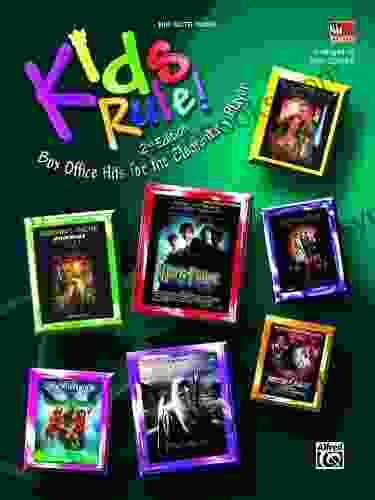Managing the Risk of Working Alone: A Comprehensive Guide for Employers and Employees

Working alone can be a hazardous undertaking, but it doesn't have to be. With proper planning and risk management, employers and employees can work together to create a safe and productive work environment for lone workers.
This comprehensive guide provides employers and employees with everything they need to know to manage the risks of working alone, including:
4.4 out of 5
| Language | : | English |
| File size | : | 3497 KB |
| Text-to-Speech | : | Enabled |
| Screen Reader | : | Supported |
| Enhanced typesetting | : | Enabled |
| Word Wise | : | Enabled |
| Print length | : | 37 pages |
| Lending | : | Enabled |
| Paperback | : | 126 pages |
| Item Weight | : | 6.4 ounces |
| Dimensions | : | 5.85 x 0.32 x 8.27 inches |
- Identifying the risks of working alone
- Developing and implementing risk management strategies
- Providing training and support for lone workers
- Creating a culture of safety and security
Identifying the Risks of Working Alone
The first step to managing the risk of working alone is to identify the potential hazards. These hazards can vary depending on the nature of the work, the work environment, and the individual worker.
Some common risks of working alone include:
- Physical hazards, such as falls, slips, trips, and exposure to hazardous substances
- Security hazards, such as robbery, assault, and harassment
- Psychological hazards, such as stress, anxiety, and depression
- Medical emergencies, such as heart attack, stroke, and seizure
It is important to note that the risks of working alone are not always obvious. Some hazards, such as stress and anxiety, may not be immediately apparent. However, it is still important to be aware of these risks and take steps to mitigate them.
Developing and Implementing Risk Management Strategies
Once the risks of working alone have been identified, employers and employees can work together to develop and implement risk management strategies. These strategies should be tailored to the specific work environment and the individual worker.
Some common risk management strategies include:
- Job hazard analysis: This process involves identifying the hazards associated with a particular job and developing procedures to control or eliminate those hazards.
- Safe work practices: These are specific procedures that workers must follow to reduce the risk of injury or illness.
- Training and education: Workers must be trained on the risks of working alone and how to mitigate those risks.
- Supervision and monitoring: Supervisors should regularly check in with lone workers to ensure that they are safe and that they are following safe work practices.
- Communication systems: Lone workers should have access to reliable communication systems so that they can contact help in an emergency.
- Personal safety devices: Lone workers may be required to wear personal safety devices, such as a panic button or a tracking device.
It is important to note that risk management is an ongoing process. As the work environment or the individual worker changes, the risk management strategies should be reviewed and updated accordingly.
Providing Training and Support for Lone Workers
Training and support are essential for lone workers to stay safe and productive. Employers should provide workers with training on the following topics:
- The risks of working alone
- Safe work practices
4.4 out of 5
| Language | : | English |
| File size | : | 3497 KB |
| Text-to-Speech | : | Enabled |
| Screen Reader | : | Supported |
| Enhanced typesetting | : | Enabled |
| Word Wise | : | Enabled |
| Print length | : | 37 pages |
| Lending | : | Enabled |
| Paperback | : | 126 pages |
| Item Weight | : | 6.4 ounces |
| Dimensions | : | 5.85 x 0.32 x 8.27 inches |
Do you want to contribute by writing guest posts on this blog?
Please contact us and send us a resume of previous articles that you have written.
 Book
Book Novel
Novel Page
Page Chapter
Chapter Text
Text Story
Story Genre
Genre Reader
Reader Library
Library Paperback
Paperback E-book
E-book Magazine
Magazine Newspaper
Newspaper Paragraph
Paragraph Sentence
Sentence Bookmark
Bookmark Shelf
Shelf Glossary
Glossary Bibliography
Bibliography Foreword
Foreword Preface
Preface Synopsis
Synopsis Annotation
Annotation Footnote
Footnote Manuscript
Manuscript Scroll
Scroll Codex
Codex Tome
Tome Bestseller
Bestseller Classics
Classics Library card
Library card Narrative
Narrative Biography
Biography Autobiography
Autobiography Memoir
Memoir Reference
Reference Encyclopedia
Encyclopedia Dianne Darr Couts
Dianne Darr Couts Nancy J Mooney
Nancy J Mooney Cyd Harrell
Cyd Harrell Larry Elder
Larry Elder Dan Abnett
Dan Abnett Dan Chen
Dan Chen Jenifer Dick
Jenifer Dick Michael Marks
Michael Marks Cristin Morgan
Cristin Morgan D C Stricklin
D C Stricklin Kevin Kerr
Kevin Kerr Violet M Holroyd
Violet M Holroyd Eloisa Ramos
Eloisa Ramos Cynthia Go
Cynthia Go Jamie White
Jamie White Claudia E Cornett
Claudia E Cornett Meg Cabot
Meg Cabot Lydia Sherrer
Lydia Sherrer Colin James
Colin James Cleveland Moffett
Cleveland Moffett
Light bulbAdvertise smarter! Our strategic ad space ensures maximum exposure. Reserve your spot today!

 Gary ReedPlot Grove Press Poetry Series: A Literary Masterpiece that Unfolds the Human...
Gary ReedPlot Grove Press Poetry Series: A Literary Masterpiece that Unfolds the Human...
 Alexander BlairChorales and Warm-Up Exercises for Tone Technique and Rhythm: Mastering the...
Alexander BlairChorales and Warm-Up Exercises for Tone Technique and Rhythm: Mastering the...
 Rubén DaríoDiscover the Literary Treasures of "Sociable Letters": A Timeless Anthology...
Rubén DaríoDiscover the Literary Treasures of "Sociable Letters": A Timeless Anthology... Devon MitchellFollow ·16.9k
Devon MitchellFollow ·16.9k Elton HayesFollow ·2.4k
Elton HayesFollow ·2.4k Felix HayesFollow ·16.7k
Felix HayesFollow ·16.7k Mitch FosterFollow ·11.4k
Mitch FosterFollow ·11.4k Earl WilliamsFollow ·11.3k
Earl WilliamsFollow ·11.3k Raymond ParkerFollow ·15k
Raymond ParkerFollow ·15k Will WardFollow ·4.5k
Will WardFollow ·4.5k Pete BlairFollow ·15.9k
Pete BlairFollow ·15.9k

 Cooper Bell
Cooper BellKids Rule Box Office Hits for the Elementary Player
Empowering Young Performers:...

 Gabriel Blair
Gabriel BlairUnraveling the Enigma: Political Alienation and Its...
In the labyrinthine tapestry of human...

 Anthony Burgess
Anthony BurgessBe a Great Singer: Unleash Your Musical Talent with...
Do you dream of singing with...

 Heath Powell
Heath PowellDive into a Musical Masterpiece: "10 for 10 Sheet Music...
An Enchanting Journey Through Broadway...

 Guy Powell
Guy PowellUniversal Rights, Systemic Violations, and Cultural...
The notion of universal human rights is a...
4.4 out of 5
| Language | : | English |
| File size | : | 3497 KB |
| Text-to-Speech | : | Enabled |
| Screen Reader | : | Supported |
| Enhanced typesetting | : | Enabled |
| Word Wise | : | Enabled |
| Print length | : | 37 pages |
| Lending | : | Enabled |
| Paperback | : | 126 pages |
| Item Weight | : | 6.4 ounces |
| Dimensions | : | 5.85 x 0.32 x 8.27 inches |








